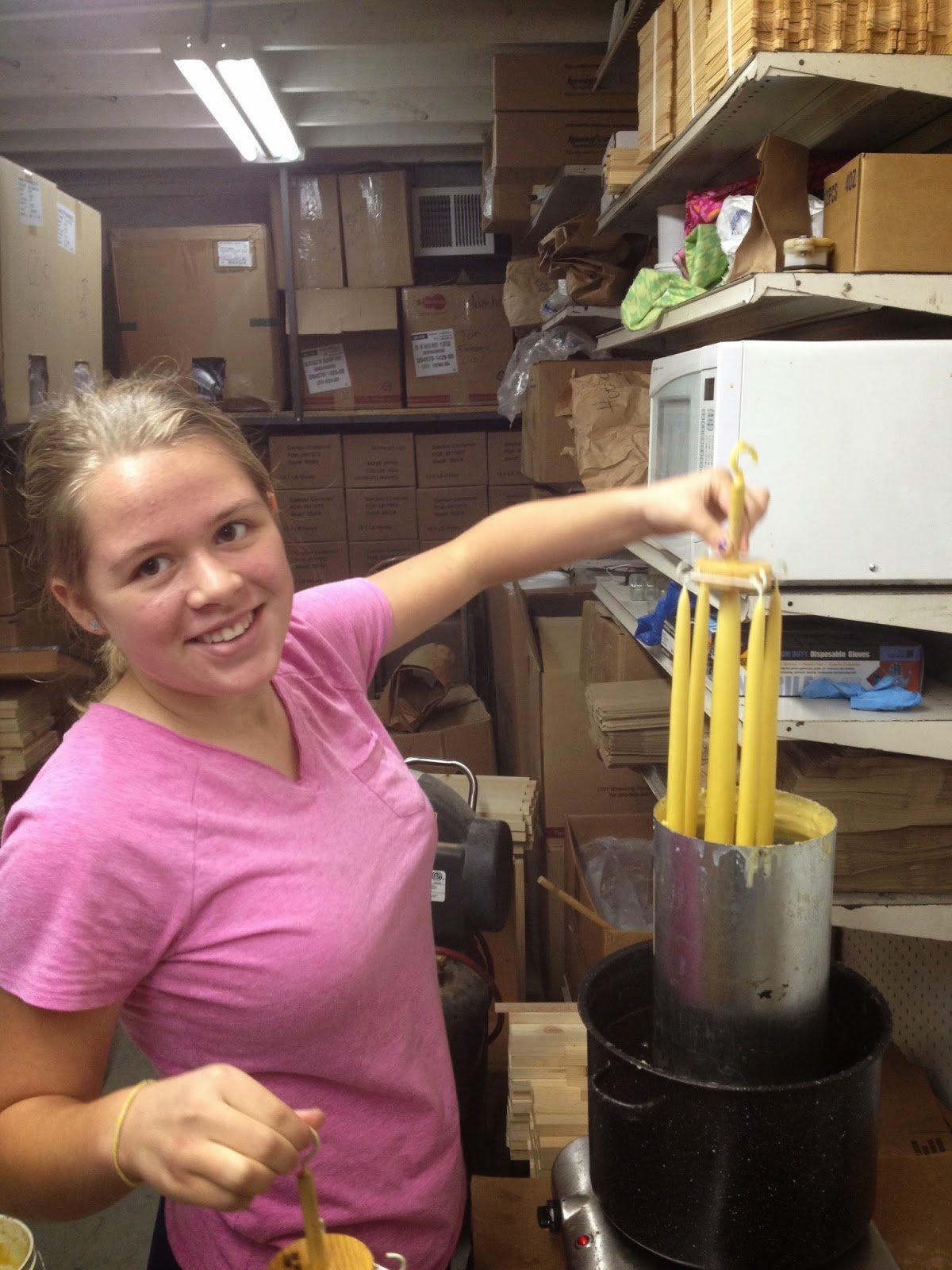The feature event at the candle classes is making hand dipped tapers. Dipping candles works better as a group activity. It requires a larger quantity of beeswax than most hobby beekeeper will ever be able to accumulate. My dip tank holds about 10 pounds of beeswax and I must have close to another ten pounds of liquid beeswax available to keep feeding the dip tank. The wax is consumed as the candles grow so I am continually adding more wax. When we are finished I still have about ten pounds of wax in the dip tank.
There has to be a certain interval between dips. If the interval is too short, the candles don't cool sufficiently between dips and fail to grow as quickly as they should. On the other hand, if the interval is too long the new layers of wax don't adhere properly. I've found through experience that if I dip twelve racks of tapers I end up with just about the right interval. I use dipping racks that each produce two pairs of tapers connected by a common wick. We end up making a total of 48 tapers during each class. Ideally I end up with six people in the class so that each student gets to dip two racks and I just monitor the wax level in the dip tank. I only had four people in the first class so I was rather busy managing the beeswax level in the dip tank as well as dipping the extra four racks of candles.
 |
| Grand daughter Madelynn helps me make dipped beeswax tapers |
 |
| The beautiful finished product |
In addition to the tapers we poured votives and several pillars. I have a lot of votive and tea light molds. When I pour votives or tea lights I usually do about 40 or more at a time. I also have about 15 different flexible silicon molds that are available for use at the candle classes, including various sizes of pillars, three different sizes of pine cones, three different bee skep molds, and a few others. I also have an eleven piece nativity set which I never pour as candles even though they are technically candle molds and have holes for the wicks. After all, who is going to burn Mary or Joseph or the baby Jesus? It really isn't practical to pour the nativity set at a candle class. First of all, they are a bit difficult to pour. The optimum time to remove some of the figures is about four or five hours after pouring. I'm just not inclined to wait around at the store until two or three in the morning until the time is right. If I wait until the next morning, the wax has become more brittle and it is harder to remove the pieces from their molds without damaging them. I suppose the other option would be to use the honey warming cabinet to warm them up a bit before attempting to remove them from the molds. The animal figures are particularly difficult. If I'm not careful, I end up with what my friend Quentin calls Wyoming donkeys or cows. Those are ones which have lost part of an ear to frostbite.
No comments:
Post a Comment